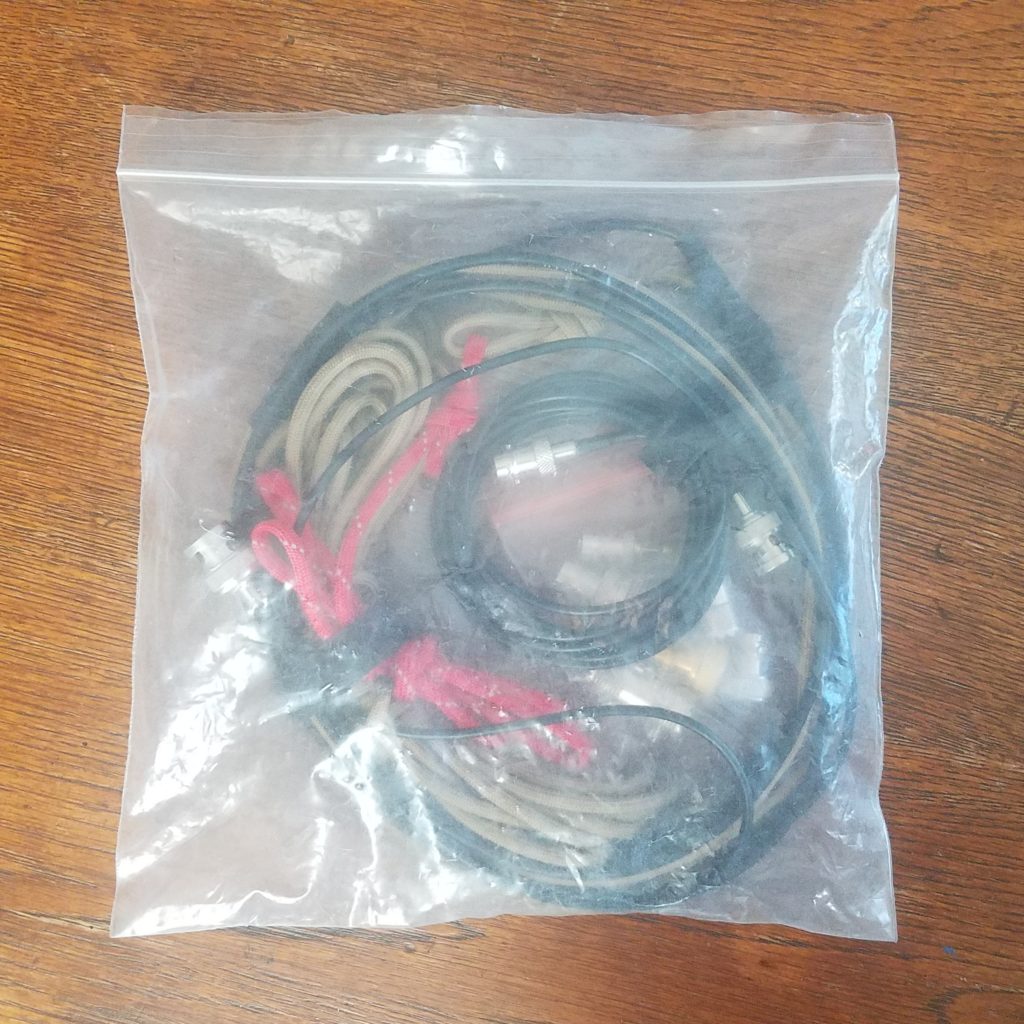
Howdy y’all! This is my second post for today. I wanted to explain my modified Ed Fong roll-up J-pole antenna and kit. This is the stock Ed Fong DBJ-2 (ham) dual band roll up antenna kit with a twist and an extended adapter pack. The antenna itself is pretty great, but I noticed while using it that there were a couple issues regarding setup. I had trouble hanging it in bushes and trees without carrying some extra materials like paracord. In addition to that sometimes the antenna would snag and you’d need to pull on the attached feed line to get it down which could damage the antenna by weakening connections between the feed line and ladder line or separating them entirely! The antenna comes with a wire tie attached to the end which could be used to hang it from a small object, but it didn’t work well because unless you were hanging it from a small metal object like a nail. Using a J-pole with metal objects near them and above the bottom of the antenna can detune them, and likely increasing the the SWR of your setup. Here’s how I solved both of those problems and set the kit up for a number of radios I and other friends have just in case we needed to hook something different up to it. It has come in handy already.
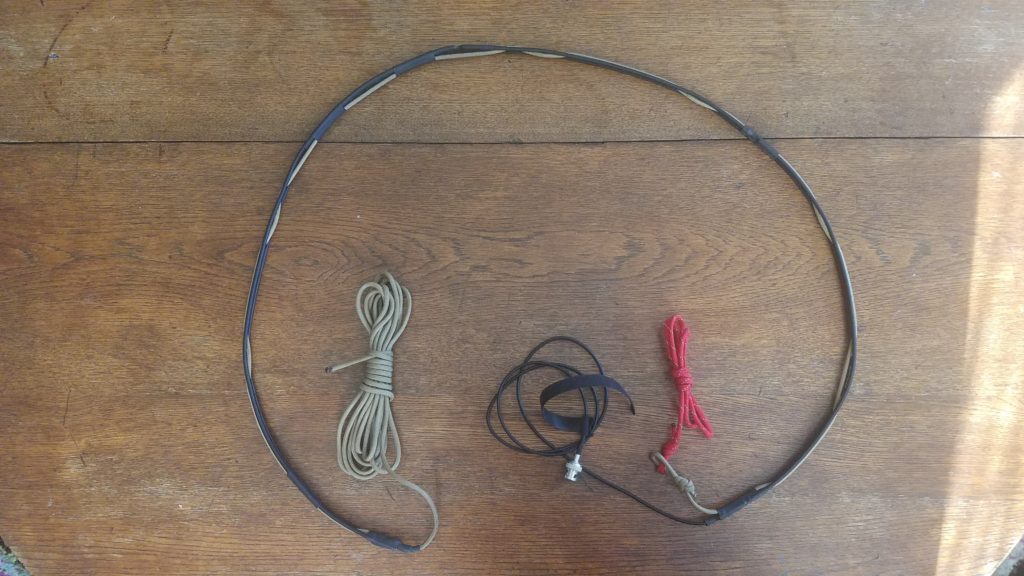
Solving the ease-of-hanging and snagging issues turned out to be the same solution – creative use of inexpensive paracord and heat shrink tubing. The ladder line that serves as the antenna’s radiator has convenient slots that one can weave paracord through. If you tie the paracord to the top of the antenna and weave the paracord through the slots in the antenna you can take a long end and throw it over a branch or tie it to some overhead structure, and also use it as a more rugged line to pull a stuck antenna down with. My initial setup didn’t have enough paracord on the bottom to pull the antenna down when it was up higher and stuck so I added the bright red line to give it more length to retrieve it from a higher location. The bright red length of paracord with a reflective 3M strip woven in also makes it more visible in low light or when you’re looking for the end with a flash light. We can now hang and retrieve our antenna easily and prevent damage to it if there’s a snag you need to apply more pulling force. Here are some more detailed pictures of how the paracord is tied on, woven, and secured by heat shrink tubing.
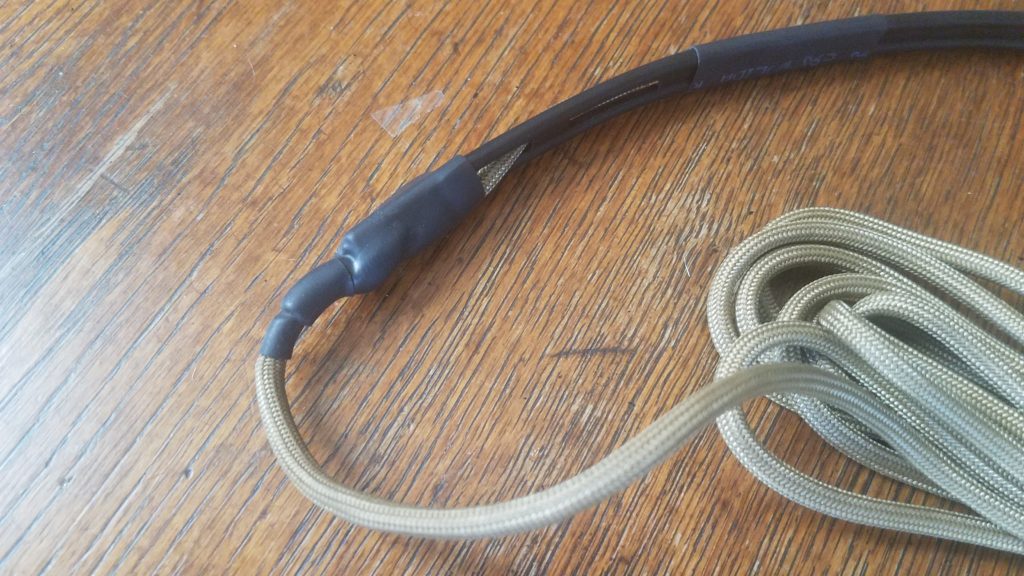
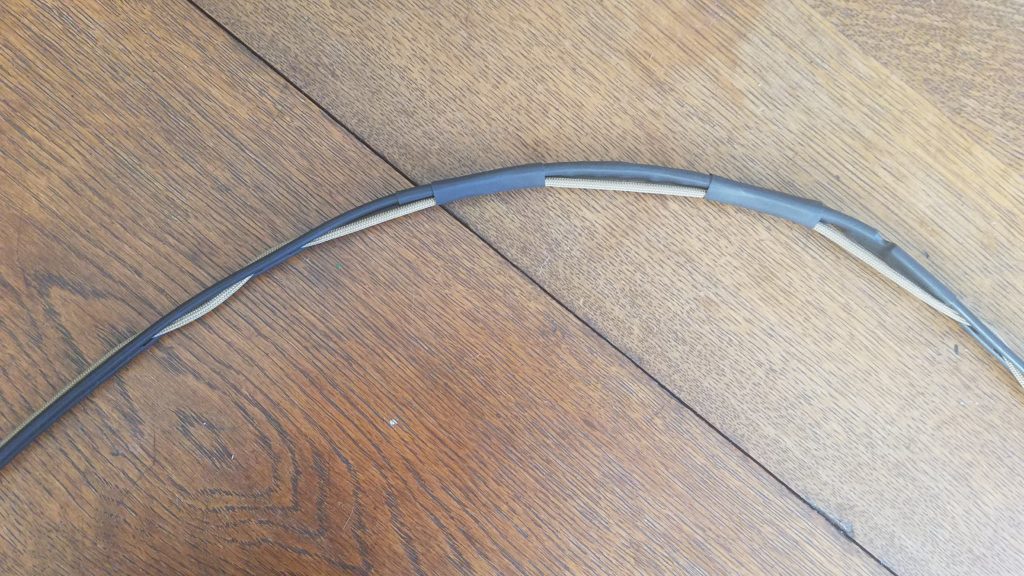

At this point we should probably talk abut the kit in its entirety. The modified antenna is obviously a critical component, but being able to connect the antenna to various radios is also very important. For that we’ll start with an exploded view of the kit.
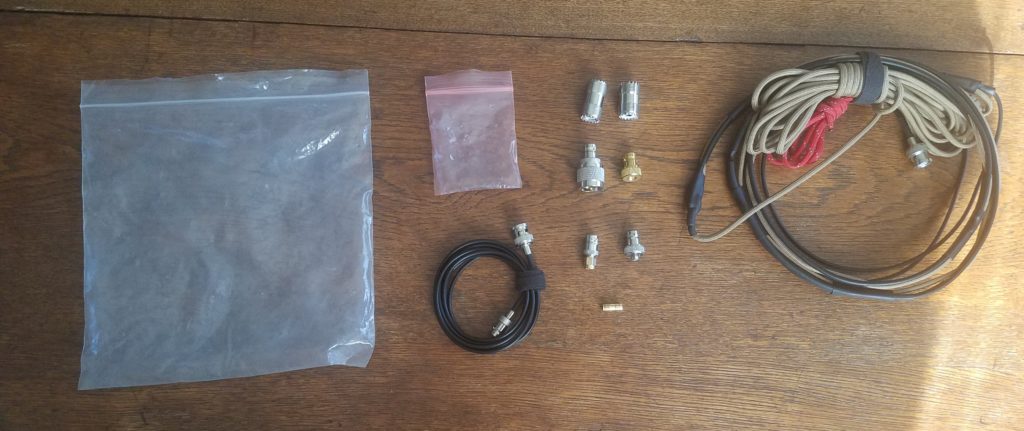
This kit isn’t anything really fancy. It comes with the stock antenna and male-to-female extended BNC cable. The antenna itself has a BNC end, but not every radio has a BNC connector. I’ve used this antenna with a number of radios including dual-band Kenwood mobile radios, a Baofeng UV-5R, a Yaesu FT3DR, and a Yaesu FT-857D. The two of those radios have a PL-239/SO-239 connector, one has a male SMA, and one has a female SMA connection. This adapter kit allows an operator to connect any radio with a BNC, SMA male, SMA female, or a PL-239/SO-239 connector to the antenna… additionally you can connect one or more pieces of coax with PL-239/SO-239 cables as well. This can be handy if the antenna is up high or if the radio is far from the antenna. Here’s a list of the parts in the graphic top to bottom, left to right:
- Medium sized heavy plastic zip-loc bag to hold the kit
- Small heavy plastic zip-loc bag to hold small adapter parts
- 6′ BNC male to female extension cable (originally came with the antenna)
- 2x PL-239/SO-239 barrel connectors for both “changing the gender” (I’m not a fan of this terminology, but it’s what’s used broadly) of the BNC to PL-239/SO-239 adapter and for connecting two pieces of feed line together.
- BNC to PL-239/SO-239 adapter
- BNC to SMA male adapter with a wide-flanged connector (for my Yaesu HT)
- BNC to SMA male adapter with a narrow spinning connector
- BNC to SMA female adapter with a wide-flanged connector
- BNC female barrel connector for use with the narrow spinning connector to adapt it to a male port
- Rolled up J-pole antenna
With this set of adapters and cables we can connect this antenna to a wide variety of radios which might be handy in an emergency, or if you happen to forget another antenna. It’s also worth mentioning that this method could also be applied to other roll-up J-pole antennas, not just for ham bands.
